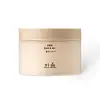What's inside
What's inside
 Key Ingredients
Key Ingredients

 Benefits
Benefits

 Concerns
Concerns

 Ingredients Side-by-side
Ingredients Side-by-side

Water
Skin ConditioningButylene Glycol
HumectantNiacinamide
Smoothing1,2-Hexanediol
Skin ConditioningPropanediol
SolventPolyglycerin-3
HumectantPolyglyceryl-10 Laurate
Skin ConditioningGluconolactone
Skin ConditioningSmilax China Bark Extract
Skin ConditioningHydrogenated Poly(C6-14 Olefin)
EmollientAcrylates/C10-30 Alkyl Acrylate Crosspolymer
Emulsion StabilisingEthylhexylglycerin
Skin ConditioningXanthan Gum
EmulsifyingAdenosine
Skin ConditioningGlycerin
HumectantCitrus Tangerina Extract
TonicLimnanthes Alba Seed Oil
Skin ConditioningCitric Acid
BufferingTromethamine
BufferingLactobacillus/Water Hyacinth Ferment
Skin ProtectingYeast Ferment Extract
Skin ConditioningSodium Phytate
Parfum
MaskingPolyglyceryl-3 Methylglucose Distearate
EmulsifyingFoeniculum Vulgare Fruit Extract
EmollientCrocus Sativus Flower Extract
MaskingElettaria Cardamomum Seed Extract
PerfumingCoriandrum Sativum Extract
Skin ConditioningProtease
ExfoliatingHydrogenated Lecithin
EmulsifyingPueraria Lobata Root Extract
HumectantPinus Densiflora Leaf Extract
AntimicrobialOenothera Biennis Flower Extract
AstringentUlmus Davidiana Root Extract
Skin ConditioningMethyl Glucose Sesquistearate
EmollientCetearyl Glucoside
EmulsifyingPinus Pinaster Bark Powder
AbrasiveCapryloyl Salicylic Acid
ExfoliatingTocopherol
AntioxidantWater, Butylene Glycol, Niacinamide, 1,2-Hexanediol, Propanediol, Polyglycerin-3, Polyglyceryl-10 Laurate, Gluconolactone, Smilax China Bark Extract, Hydrogenated Poly(C6-14 Olefin), Acrylates/C10-30 Alkyl Acrylate Crosspolymer, Ethylhexylglycerin, Xanthan Gum, Adenosine, Glycerin, Citrus Tangerina Extract, Limnanthes Alba Seed Oil, Citric Acid, Tromethamine, Lactobacillus/Water Hyacinth Ferment, Yeast Ferment Extract, Sodium Phytate, Parfum, Polyglyceryl-3 Methylglucose Distearate, Foeniculum Vulgare Fruit Extract, Crocus Sativus Flower Extract, Elettaria Cardamomum Seed Extract, Coriandrum Sativum Extract, Protease, Hydrogenated Lecithin, Pueraria Lobata Root Extract, Pinus Densiflora Leaf Extract, Oenothera Biennis Flower Extract, Ulmus Davidiana Root Extract, Methyl Glucose Sesquistearate, Cetearyl Glucoside, Pinus Pinaster Bark Powder, Capryloyl Salicylic Acid, Tocopherol
Water
Skin ConditioningHamamelis Virginiana Water
AstringentGlycolic Acid
BufferingSodium Hydroxide
BufferingBetaine
HumectantTranexamic Acid
AstringentNiacinamide
SmoothingNelumbo Nucifera Germ Extract
Skin ConditioningAvena Sativa Bran Extract
AbrasivePhenoxyethanol
PreservativePolysorbate 20
EmulsifyingSodium Gluconate
Skin ConditioningDipotassium Glycyrrhizate
HumectantEthylhexylglycerin
Skin ConditioningBenzoic Acid
MaskingPropanediol
SolventSodium Benzoate
MaskingPotassium Sorbate
Preservative1,2-Hexanediol
Skin ConditioningCaprylhydroxamic Acid
Water, Hamamelis Virginiana Water, Glycolic Acid, Sodium Hydroxide, Betaine, Tranexamic Acid, Niacinamide, Nelumbo Nucifera Germ Extract, Avena Sativa Bran Extract, Phenoxyethanol, Polysorbate 20, Sodium Gluconate, Dipotassium Glycyrrhizate, Ethylhexylglycerin, Benzoic Acid, Propanediol, Sodium Benzoate, Potassium Sorbate, 1,2-Hexanediol, Caprylhydroxamic Acid
Ingredients Explained
These ingredients are found in both products.
Ingredients higher up in an ingredient list are typically present in a larger amount.
1,2-Hexanediol is a synthetic liquid and another multi-functional powerhouse.
It is a:
- Humectant, drawing moisture into the skin
- Emollient, helping to soften skin
- Solvent, dispersing and stabilizing formulas
- Preservative booster, enhancing the antimicrobial activity of other preservatives
Ethylhexylglycerin (we can't pronounce this either) is commonly used as a preservative and skin softener. It is derived from glyceryl.
You might see Ethylhexylglycerin often paired with other preservatives such as phenoxyethanol. Ethylhexylglycerin has been found to increase the effectiveness of these other preservatives.
Niacinamide is a multitasking form of vitamin B3 that strengthens the skin barrier, reduces pores and dark spots, regulates oil, and improves signs of aging.
And the best part? It's gentle and well-tolerated by most skin types, including sensitive and reactive skin.
You might have heard of "niacin flush", or the reddening of skin that causes itchiness. Niacinamide has not been found to cause this.
In very rare cases, some individuals may not be able to tolerate niacinamide at all or experience an allergic reaction to it.
If you are experiencing flaking, irritation, and dryness with this ingredient, be sure to double check all your products as this ingredient can be found in all categories of skincare.
When incorporating niacinamide into your routine, look out for concentration amounts. Typically, 5% niacinamide provides benefits such as fading dark spots. However, if you have sensitive skin, it is better to begin with a smaller concentration.
When you apply niacinamide to your skin, your body converts it into nicotinamide adenine dinucleotide (NAD). NAD is an essential coenzyme that is already found in your cells as "fuel" and powers countless biological processes.
In your skin, NAD helps repair cell damage, produce new healthy cells, support collagen production, strengthen the skin barrier, and fight environmental stressors (like UV and pollution).
Our natural NAD levels start to decline with age, leading to slower skin repair, visible aging, and a weaker skin barrier. By providing your skin niacinamide, you're recharging your skin's NAD levels. This leads to stronger, healthier, and younger looking skin.
Another name for vitamin B3 is nicotinamide. This vitamin is water-soluble and our bodies don't store it. We obtain Vitamin B3 from either food or skincare. Meat, fish, wheat, yeast, and leafy greens contain vitamin B3.
The type of niacinamide used in skincare is synthetically created.
Learn more about NiacinamidePropanediol is an all-star ingredient. It softens, hydrates, and smooths the skin.
It’s often used to:
Propanediol is not likely to cause sensitivity and considered safe to use. It is derived from corn or petroleum with a clear color and no scent.
Learn more about PropanediolWater. It's the most common cosmetic ingredient of all. You'll usually see it at the top of ingredient lists, meaning that it makes up the largest part of the product.
So why is it so popular? Water most often acts as a solvent - this means that it helps dissolve other ingredients into the formulation.
You'll also recognize water as that liquid we all need to stay alive. If you see this, drink a glass of water. Stay hydrated!
Learn more about Water